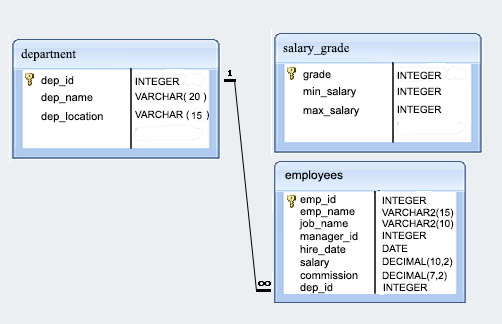SQL Exercise: Employee start with 'A' and end with 'N', length six
[An editor is available at the bottom of the page to write and execute the scripts.]
107. From the following table, write a SQL query to find those employees whose name is six characters in length, starting with 'A' and ending with 'N'. Return number of employees.
Sample table: employees
Sample Solution:
SELECT *
FROM employees
WHERE length(emp_name)=6
AND emp_name LIKE 'A%N';
Sample Output:
emp_id | emp_name | job_name | manager_id | hire_date | salary | commission | dep_id --------+----------+----------+------------+------------+---------+------------+-------- 64989 | ADELYN | SALESMAN | 66928 | 1991-02-20 | 1700.00 | 400.00 | 3001 (1 row)
Explanation:
The said query in SQL that selects all columns of employees whose names have a length of 6 characters and start with the letter 'A' and end with the letter 'N' from the employees table.
With the WHERE clause, the length() function is used to verify that emp_name contains exactly six characters, and the LIKE operator is used to match names that begin with A and end with 'N'.
Go to:
PREV : Six-character employee names with R in 3rd position.
NEXT : Employees joined with a as the 2nd character of a month.
Practice Online
Sample Database: employee

Have another way to solve this solution? Contribute your code (and comments) through Disqus.
What is the difficulty level of this exercise?
Test your Programming skills with w3resource's quiz.
